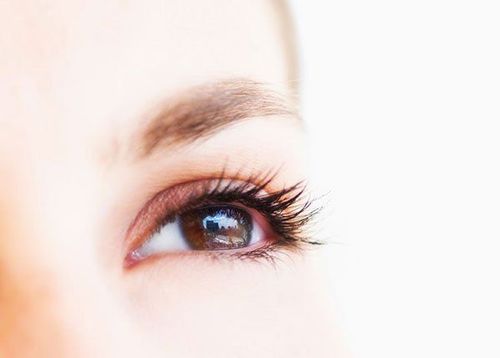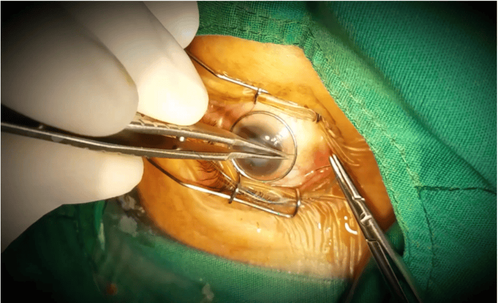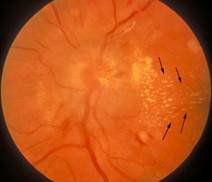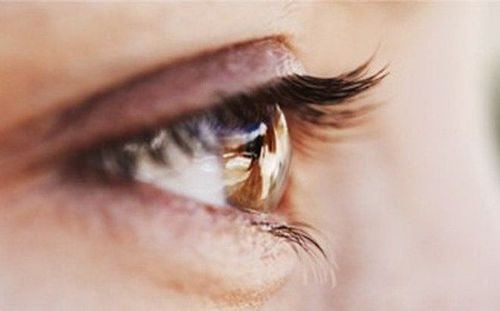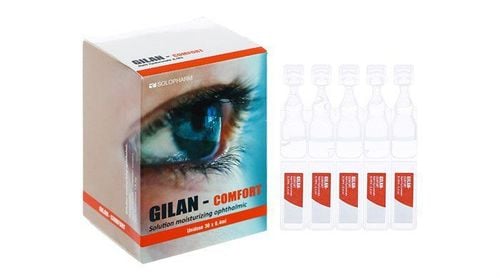This is an automatically translated article.
The article was professionally consulted by Specialist Doctor I Nguyen Thi Bich Nhi - Ophthalmologist - General Surgery Department - Vinmec Nha Trang International General Hospital. The doctor has 10 years of experience in the field of ophthalmology.The cornea is the most vulnerable part of the eye area. Just coming into contact with dust, dirt, sand, or even the edge of a piece of paper can cause corneal detachment or tearing. In some cases, corneal abrasions become infected and cause corneal ulcers, leading to very serious consequences if not given proper first aid and timely emergency.
1. Corneal tear
1.1. Define
Injury to the cornea is one of the serious injuries of the eye. Therefore, the treatment of corneal sutures and subsequent treatment requires a very active, close and thorough. If the corneal tear is not managed well, it will lead to bad consequences for the patient, namely, it can lead to complete loss of vision. The recovery of the eye may depend on the location of the corneal tear, the extent and cause of the tear, etc. All of the above factors make the identification of a corneal tear difficult.1.2. Causes and treatment
If the patient's eye is still red even though the corneal tear has healed, it is possible that the cause of the injury is still keratitis. In addition, because tearing of the cornea is often accompanied by many other intraocular lesions, it causes red eyes.For blunt trauma causing damage to the eye and parts around the eye such as: hematoma, eyelid bruise, eye socket, bleeding in the eye: conjunctival hemorrhage, anterior chamber hemorrhage, crystalluria , Retinal...; damage to the eye's organs such as: vitreous body, retina, optic nerve...; need to be treated properly by using an eye mask and then going to the nearest ophthalmology facility for examination and treatment.
In case of penetrating trauma, this can be seen as the cause of corneal tear and heavy bleeding. So the first thing to stop bleeding immediately, can use common antibiotic eye drops such as chloramphenicol. Apply antibiotic pomade and bandage the eye, then immediately go to an ophthalmology facility for stitches and treatment of corneal tears.
Usually a corneal tear after stitches heals in about a month. However, the cornea can then stabilize and heal, but it is also possible that keratitis recurs or progresses to corneal dystrophy, causing severe vision loss. Therefore, patients need to continue to monitor treatment to promptly handle possible complications.
1.3. Prevent

Tránh bị va chạm vào mắt hoặc nước dơ bẩn, bụi bặm vào mắt
2. Corneal detachment
2.1. Define
Corneal detachment is also known as corneal abrasion or corneal epithelium. Corneal detachment is a condition in which scratches on the surface of the cornea are caused by a foreign body. The cornea is the outermost transparent aqueous layer of the eyeball, which acts as a "shield" to protect, and at the same time combines with the lens and pupil to focus light from the image transmitted to the inner retina. eyeball. Foreign objects such as dust, sand grains, small insects, ... can fly into the eye and stick or stick to the cornea. If not treated properly, the disease can lead to corneal detachment causing permanent corneal damage.2.2. Causes and treatment
Corneal detachment can occur at any age and during any normal activity such as movement, walking, repairing or even accidentally touching the cornea with a strong hand. It can limit the chances of disease. corneal detachment by minimizing risk factors.When foreign objects such as dust, sand particles stay on the eyelids for a long time, it can cause scratches on the cornea when you blink. Cigarette smoke, wearing contact lenses for a long time, rubbing the eyes, or prolonged dry eyes can cause corneal detachment.
Before choosing a treatment method, the patient should immediately go to a medical facility for advice. The doctor will diagnose by observing the eyes using special specialized instruments. You may need to use eye drops containing a biological dye, which helps the doctor see the damage to the cornea more easily and accurately.
When determining the eye damage and type of foreign body causing corneal detachment, the ophthalmologist can recommend appropriate treatment and treatment. Usually, the doctor will give the patient non-antibiotic steroid or anti-inflammatory eye drops or ointment to reduce swelling and inflammation and prevent scarring of the cornea.
Patients may be prescribed oral medication to relieve pain and reduce irritation. In case of a deep puncture in the eye, surgery may be required.
2.3. Prevent
The consequences of corneal detachment are often very severe, affecting both visual function and aesthetics such as: reduced vision, blindness, bad scars on the patient's eyes. In cases of corneal detachment causing blindness or inability to keep the eye, the eye must be removed. Therefore, the prevention of eye injuries in general and corneal detachment in particular is extremely important.For young children, care should be taken, choosing toys suitable for the child's age. Avoid toys with sharp objects such as archery and darts, or dangerous toys such as fake shotguns.

Cần cẩn thận trông coi trẻ em, chọn đồ chơi phù hợp với lứa tuổi của trẻ
For adults, it is necessary to have a sense of accident prevention, avoid rubbing your eyes too hard to prevent corneal detachment for everyone, especially workers.
When in contact with chemicals such as spraying pesticides, working with chemicals, welders, lathes, ... need to wear protective eyewear for workers, strictly comply with labor safety regulations.
After the treatment of corneal detachment, the patient should follow the doctor's instructions and follow up with the appointment or when there are abnormalities in the eyes: eye pain, decreased vision, more red eyes need to notify the doctor.
Patients need to eat enough substances to help improve health, supplement vitamins A, C and E to heal wounds; Eat foods that are easy to digest, fruits to avoid constipation leading to increased pressure in the injured eye when defecating.
3. Treatment of corneal tear / detachment at Vinmec

Khám mắt với các bác sĩ có chuyên môn cao để điều trị rách/bong giác mạc
With a team of leading experts and modern equipment, Vinmec Times is currently implementing corneal transplantation in complex corneal diseases.
Please dial HOTLINE for more information or register for an appointment HERE. Download MyVinmec app to make appointments faster and to manage your bookings easily.




